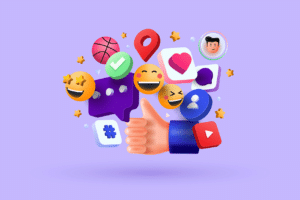Google Ads is a powerful tool for advertising. However, it’s easy to make mistakes when you’re starting out with your first campaign or even after you’ve been running ads for a while. In fact, you probably didn’t even realize some of these Google Ads mistakes were happening in the first place! If that sounds like you, don’t worry: we’re here to help! Read on for tips on how to avoid making these common errors with Google Ads.

Google Ads Mistakes You Didn’t Realize Were Costing You Money!
1. Not having an effective landing page.
This is a big one. Maybe you’ve heard of landing pages, maybe not. But whether you know it or not, you’ve most likely had a first impression of your business as a customer. And if that first impression isn’t good enough to convert the customer into becoming a paying client or loyal customer, then there’s no point in having an ad at all!
A good landing page should be designed with conversion in mind—which means being mobile-friendly and easy to navigate are key factors. They should also look clean and professional (like a website), have clear calls-to action (CTAs) that lead straight back to Google Ads so users can convert easily through their phone device or laptop/desktop computer browser on page load.
READ: How To: Create Strong Call To Actions On Your Website? 5 Ways To Increase Conversions!
2. You’re not actually taking advantage of all that Google Ads has to offer.
Google Ads has a lot of features, but you may not be using all of them. There are many different ways to target audiences in Google Ads: You can target by location, age and gender—and that’s just the beginning.
You could also target users who have recently visited your website or searched for certain phrases. Or you can exclude customers who haven’t made a purchase in the past 30 days or even those who are members of an email list you’ve created specifically for advertising purposes (such as an Amazon Affiliates email list).
It’s important to take advantage of all these options because they help ensure that only qualified visitors see your ads—in other words, only people who will be interested in what you’re promoting will click on it.
3. You’re choosing irrelevant keywords.
The first step to avoiding this mistake is to make sure you’re using the right tool. The Google Ads Keyword Planner provides a good starting point, but it’s not the only way to find relevant keywords. To find new phrases, try conducting searches in popular search engines like Yahoo!, Bing and Baidu. If you have an existing website or blog, use your site’s analytics data (Google Analytics) to look at what search terms people are using when they visit your site.
If none of this works for you, try looking for questions that people in your industry ask on forums and discussion boards so that you can develop ads based around those topics.
4. You’re not paying attention to your negative keywords.
Negative keywords are a great way to save money on Google Ads. You can choose negative keywords based on your current advertising strategy and then use those negative keywords to help you avoid irrelevant searches. For example, if you’re selling menswear online and want to show your ad only when users search for “men’s clothing” or “menswear,” use these as two of your negative keywords. This will ensure that people who search for items like “ladies’ clothing” or “womenswear” won’t see your ad in their results.

The more relevant your ad is to what people are searching for (and the fewer irrelevant searches it excludes), the more likely it is that the user will click through from their search and convert into a customer—which means less wasted money spent on views that don’t lead anywhere!
5. You’re setting your bids too low.
It’s easy to think of your campaigns as a numbers game, where you want to get as many clicks as possible with the lowest bid. However, this isn’t necessarily the right approach—you need to know what you’re willing to pay for a click and what kind of conversion rates you can expect before bidding on keywords.
If your goal is lead generation (and it should be), then price per conversion needs to be much higher than price per click. If your product is $500 and most people convert after their first visit, then they need only make one purchase from your ads in order for them to have been worth every penny.
6. Your ad copy is just bad.
Ad copy is the text that appears in your ad. Ad copy is a critical part of your ad’s performance. It’s what convinces people to click on your ad and ultimately convert, which means that you should be optimizing it for conversions instead of simply writing something that looks good or sounds clever.
When you’re creating ads, it helps if you have some idea of what keywords are being used in searches related to the products or services that you offer—and then write around those keywords. Don’t just plug them into an autofill box and call it a day: instead, think about how those keywords apply to what people will actually be searching when they want to buy from you (or find out more information).
For example, if I’m selling software designed specifically for small businesses in my area (say Los Angeles), I should probably include words like “Los Angeles” and maybe even “California” somewhere in my headline so as not to exclude potential buyers outside of LA County.
Then again, if I know there are a lot of people searching for “business management software” but few who are searching specifically for “small business management software,” then perhaps I should focus on getting clicks from people already interested rather than trying too hard at attracting new customers who might not know exactly what they’re looking for yet!
7. Your ads aren’t mobile-friendly.
Mobile-friendly ads are important for a couple of reasons. First, mobile traffic has been increasing for years—and it’s only expected to grow in the future. In fact, the average American now spends about three hours on their mobile devices every day.
Second, mobile users tend to convert at higher rates than desktop users because they’re more engaged with their phones and have less distractions on hand (like notepads and coffee cups). So if your ad isn’t mobile-friendly, you’re missing out on valuable leads!
8. You’re choosing the wrong budget for your ads.
This is an important one. Your budget is how much you can spend on your ads each day—and it’s important to set a daily budget that’s appropriate for your campaign. You want to make sure that the daily bid you set doesn’t exceed your daily budget and that you’re not wasting money by setting a high bid but not getting clicks because no one sees your ad!
If you have a low-bidding keyword, don’t just blindly bump up the bid. Instead, run some split tests in order to see which advert gets more impressions and clicks at different bids.
9. Forgetting to play around with geotargeting and demographics.
Of course, if you’re only targeting people who live in your city, that’s not a very effective strategy. If you want to see how well your ads perform outside of the United States, use geotargeting to show them to people in other countries.
If you have no idea what demographics are, don’t worry! It’s pretty simple: demographics are ways of categorizing people based on their circumstances—this might be age or location (where they’re from), gender or family status (whether they have kids), education level or profession. For example: “People with children between the ages of 5 and 8.”
Using demographics is one way for advertisers to get better results from Google Ads exposure—for example, if someone sees an ad about travel tips for families with young children before they go away on vacation this summer, then those tips will be useful when booking travel plans later on.
10. Not testing, tracking and improving your campaigns.
Google Ads are not like other advertising platforms. You can’t just create a campaign and hope for the best. Instead, you have to be proactive about testing your campaigns and optimizing them so they perform as well as they possibly can.
Google Ads is meant to be an automated platform, but that doesn’t mean you should leave it alone once you’ve set up your account and campaigns. Instead, learn how to track your results on Google Analytics or with other third-party tracking tools like HubSpot. Then find out what works by analyzing the data and make changes accordingly until you achieve higher conversions at lower costs.
Pay attention to these mistakes and you’ll see a difference in your Google Ads performance!
Tracking and testing
When it comes to Google Ads, there’s no time like the present. It’s critical to be aware of how your target audience is interacting with your ad copy, landing pages, and more so that you can make necessary changes to improve performance.
Using the data
Once you have clear tracking in place for all of these aspects of a campaign (and this will take some time), then it’s time for the fun part: analyzing the results! You’ll see what is working well, what isn’t working at all, and most importantly—how to make changes based on those findings.
Conclusion
The bottom line is that we all want to do our best to take advantage of the high level of automation available in Google Ads. However, if you don’t pay attention and make sure you’re following the best practices outlined in this article, you could be missing out on a lot of opportunities.
Don’t forget that Google Ads is still very much a human-powered platform so it’s important for everyone involved with managing your campaigns to stay on top of trends and know what these trends mean for their ads and keywords!
I hope this has helped guide you on some of the most common Google Ads mistakes people make and how to avoid their pitfalls. We can also help with your Google Ads campaign delivery and optimization! Reach out if you have a PPC campaign you’d like to discuss!





